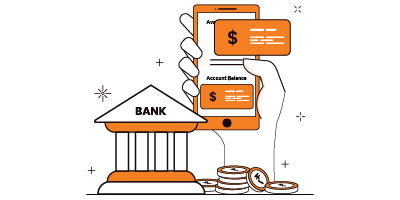What is account balance?
The account balance is the amount of money available in a financial repository. Such as a savings bank account at any given point of time. It is the net amount available after all debits and credits. A negative balance indicates net debt, for example, overdraft. Overdraft is an extension of credit. It is the credit that a financial institution extends when the balance reaches zero.
Account balance depicts the total assets minus total liabilities. For investments, the balance is subject to change over time. As the security prices rise and fall in the market. Also, many other financial accounts have an account balance. For example, from utility bills to mortgage accounts show account balance.
In some instances, account balance also means that the total amount one owes to the other. For example, credit card companies, mortgage bankers, or utility companies etc.
In a banking scenario, the account balance is the total money available in the savings account. Sometimes, the balance doesn’t reflect an accurate value of funds. It is due to pending transactions or cheques that haven’t been processed yet.
All positive balances indicate the funds available with the holder. On the other hand, negative balances indicate the amount the holder owes.
What is the difference between available funds and account balance?
The account balance is the total amount of money available in the account. It includes all the pending transactions and/or other amounts that are yet to clear, for example, cheques. In an account balance, if one can see ‘OD’ (overdraft), it means that the account holder owes money.
On the other hand, available balance or funds is the amount that one can use, spend, withdraw and transfer.
For a savings account, sometimes, the available balance can be more than the account balance. It is because of an arranged overdraft. Alternatively, the available balance can also be less due to uncleared funds.
For loan schedules, the available balance is the amount available to draw down or redraw or use as a line of credit. A nil balance in a loan account indicates that one has used the full value of the approved loan.
Why is my account balance higher than my available balance?
Often, available balance and account balance are not the same. It can be equal or higher or lower. The difference in the account balance and available balance is majorly due to pending transactions. The pending transaction is presented against the account; however, they have not yet been processed. Only upon processing, the transactions will be reflected in the current balance and appear in the account history.
When both the account balance and available balance do not match, there is potential for confusion. Even if an individual considers only the available balance as their reference, there is still a chance for error. The available balance may not reflect the true amount if certain transactions are not updated to the account.
In some scenarios, charges appear after a couple of days. The account holder is often confused as to how the account is overdrawn. Therefore, in the interim, the account balance appears to be higher.
Furthermore, due to some uncleared cheques, there might be a difference in the account balance and available balance.
How is an overdraft paid back?
Overdraft is a short term credit facility given by most banks. In simple terms, it is the limit that allows one to spend more money than they actually have in their bank account. Overdraft option allows you to go beyond “Zero” balance by a certain agreed amount. Overdraft doesn’t have a regular form of payment like Credit Cards or Loans. However, when money is added to the account, it settles the overdraft amount before adding to the balance. Overdraft incurs charges. Therefore, the longer one leaves their account below zero (negative) the higher charges they will have to pay. Additionally, one can pay off the overdraft amount cumulatively.
Banks offer OD facilities at different rates to different borrowers. Also, the bank levies interest on the overdraft amount. The bank calculates the interest daily and debits the account on a monthly basis. Furthermore, the interest amount increases in case one default on paying the overdraft amount.
OD’s do not attract any prepayment penalties like loan repayments. Additionally, one can repay the OD amounts whenever they have the money.
Following are the two types of overdrafts available:
- Authorised overdraft: The facility and term of the overdraft are arranged with the bank even before an individual actually overdraws.
- Unarranged overdraft: In an unarranged or unauthorised overdraft, there is no facility that is pre-agreed upon. This is often more expensive in terms of charges, and interest one has to pay.
Following are the different types of collaterals that banks accept against overdraft loans:
- Overdraft against house or property
- Overdraft against fixed deposits
- Against a life insurance policy
- Overdraft against equity holdings
- Overdraft against salary
- What is account balance?
- Confused if your portfolio is performing right enough to meet your goals?
- How long have you been investing in mutual funds?
- What is your current portfolio size?
- What is your approximate annual household income?
- Your profile does not qualify for a call with a Financial Expert.
- What is the difference between available funds and account balance?
- Why is my account balance higher than my available balance?
- How is an overdraft paid back?


















Show comments